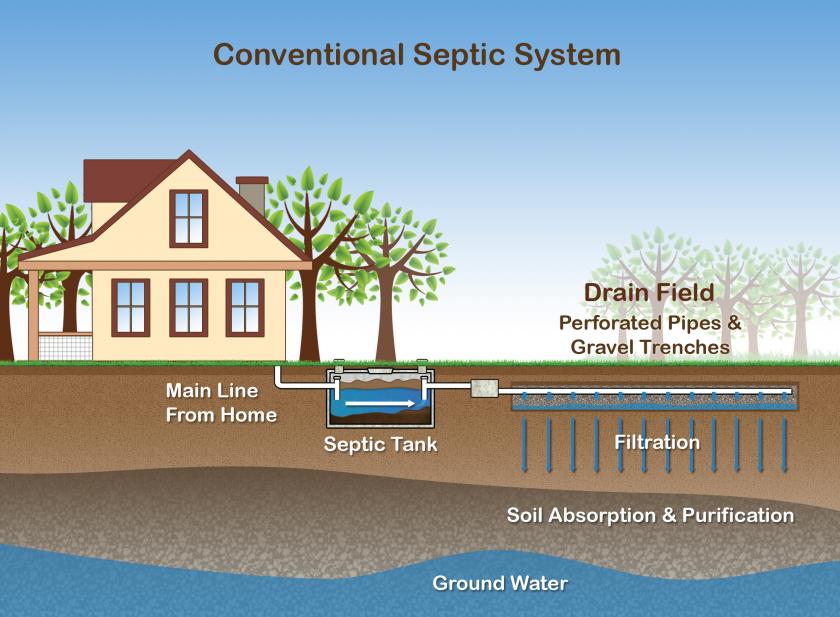Table Of Content
Some homes may be equipped with a pump tank or a pump basin in addition to a septic tank. Before the effluent is pumped to the drainfield region, it is collected in a pump tank or basin from a septic tank or ATU (Alternative Treatment Unit). A constructed wetland mimics the treatment processes that occur in natural wetlands. The wastewater then passes through the media and is treated by microbes, plants, and other media that remove pathogens and nutrients.
Maintenance and Upkeep of 1975 Septic Tanks
This can help prevent issues with the system and extend the time between pump-outs. Reducing the amount of water used in the household can help reduce the strain on the septic system and extend the time between pump-outs. This can be achieved by fixing any leaks, taking shorter showers, and only running full loads of laundry and dishes. In fact, it is very rare to have a septic tank built on site as most are precast and shipped to your site for installation.
Conventional System

Do not flush sanitary products, paper towels, cat litter, oil, cigarette butts, coffee grounds, or toxic chemicals, which will interfere with the tank’s ability to function. Any signs of bacterial issues, such as very thick scum or solids building within the tank, should be investigated. In the drainfield region, smells, rising sewage, moist areas, or lush plant growth are all signs of a problem. A septic system can also be ruined by the improper disposal of chemicals or excess organic waste, such as that produced by a trash disposal.
Follow The Pipe
I assumed most of the hydrogen sulfide is created in the leach field because the worst decay is over and around the outlet tee, spreading to a lesser degree in all directions. Locating the leaching system at a significantly lower elevation on the property seems to increase decay. It is a good idea to have the septic tank inspected by a professional every few years to ensure that it is in good condition and functioning properly. This can include checking the inlet and outlet pipes for any blockages or damage, and looking for any cracks or leaks in the tank itself. As technology continues to advance and environmental concerns grow, septic tank design is expected to undergo further improvements and innovations in the future.
Humanure: the end of sewage as we know it? - The Guardian
Humanure: the end of sewage as we know it?.
Posted: Tue, 12 May 2009 07:00:00 GMT [source]
Regular maintenance, including pumping out the solids from the tank, was crucial to ensure the proper functioning of these septic systems. Although advancements in septic tank technology have been made since the 1970s, it’s important to consider the historical context and limitations when evaluating these designs. How Septic Systems Function Septic systems are used to treat and dispose of wastewater in households that are not served by public sewers.
All About Septic Tanks
Drainfields perform at their best when the soil beneath them is not saturated. A significant influence on your septic system may be had by what you flush down the drain. In addition, the less water used, the less water that enters the septic system, reducing the likelihood of system failure.
Man whose body was found in septic tank on Alberta farm in 1977 was Sixties Scoop survivor, RCMP say - CBC.ca
Man whose body was found in septic tank on Alberta farm in 1977 was Sixties Scoop survivor, RCMP say.
Posted: Thu, 01 Jul 2021 07:00:00 GMT [source]
What is a Raised Leach Field?
The rural septic tank designs of the 1970s were influenced by the limited technology available at that time. These designs aimed to efficiently handle the waste from households in remote areas without access to central sewage systems. Septic tanks were typically constructed using concrete, fiberglass, or metal materials, and their sizes varied based on the number of occupants in the residence. In the 1970s, septic tank design underwent significant changes to improve functionality and efficiency. The focus was on developing systems that could effectively handle waste disposal while minimizing environmental impact. These tanks were designed with updated features to ensure better sewage treatment and disposal.
What are the dimensions of a 750 gallon concrete septic tank?
The inlet pipe was usually located near the bottom of the tank to allow for the settling of solids, while the outlet pipe was located higher up to prevent solids from exiting the tank. In 1975, septic tanks were typically made of concrete, although other materials such as fiberglass and plastic were also used. One of the primary concerns in septic tank design during the 1970s was the potential for groundwater contamination. If a septic system malfunctioned or leaked, there was a risk of contaminants seeping into the groundwater, which could have serious health and environmental consequences. To mitigate this risk, septic tank designers implemented measures such as improved sealing techniques and secondary containment systems to prevent leaks and minimize the potential for groundwater contamination.
The majority of firms will perform a septic system examination, which will inform you where the tank is located, how big the tank is, and whether or not there are any urgent problems. It is advised that you have your septic system evaluated by a professional septic inspector in order to get a more in-depth review of your system. The installation of septic tanks at all locations is recorded in most counties’ permission records, which are kept on file for future reference. Typically, this will include a schematic indicating the placement of the tank on the land, as well as certain dimensions that will allow you to measure to the precise site of the tank.
A malfunctioning drainfield may be indicated if you have a well and testing reveal the presence of coliform bacteria or nitrates. In the process of passing (or “percolating”) through the pore spaces of the soil, wastewater is filtered and treated by soil microbes before it eventually enters the groundwater supply. With an increase in the volume of scum and sludge, there is less space and time for the solids to separate before the wastewater is discharged from the tank, resulting in a decrease in the efficacy of the system.
In addition to a simple cleaning rooter service utilizing an electric snake, we also provide hydro-jetting, which uses high pressure water to break away hardened grease and keep the drain from backing up. The pump then works to bring the level of wastewater back down until it reaches that of the off float setting. To search public records for your property or septic system, please contact the Department of Public Health - Custodian of Records. For more information, please visit Public Health Investigation - Public Records Requests. We find cost effective solutions to complex wastewater projects throughout northern California and central California. We take a practical approach to developing a positive solution for your project.
Aerobic septic tanks require an air pump and an alarm that is triggered if the air pump stops, and, of course, an electrical circuit. Then when man became concerned about protecting his environment, he realized that many septic systems were built too deep into the ground. There was risk of polluting his drinking water by allowing wastewater to get directly into the water table before it was properly treated by filtration through the soil. In 1967, New Hampshire passed regulations requiring any leaching portion of a septic system (the part that sends water back into the ground) to be four feet above the seasonal high-water table. The design of septic tanks has evolved over time, and the design used in 1975 was widely popular at the time.
The focus on sustainability, the introduction of innovative technologies, and the adherence to stricter environmental regulations paved the way for the more efficient and sustainable septic systems we have today. As we look to the future, continued advancements in septic tank design will further enhance the efficiency, performance, and environmental friendliness of these vital waste management systems. Septic systems require regular maintenance and pumping to ensure their optimal performance. Neglecting maintenance tasks can lead to system failures, foul odors, and environmental contamination. Education campaigns were launched to raise awareness about the importance of regular inspections, pumping schedules, and proper waste management practices. The 1970s marked a turning point in environmental regulations, particularly regarding wastewater treatment and disposal.

No comments:
Post a Comment